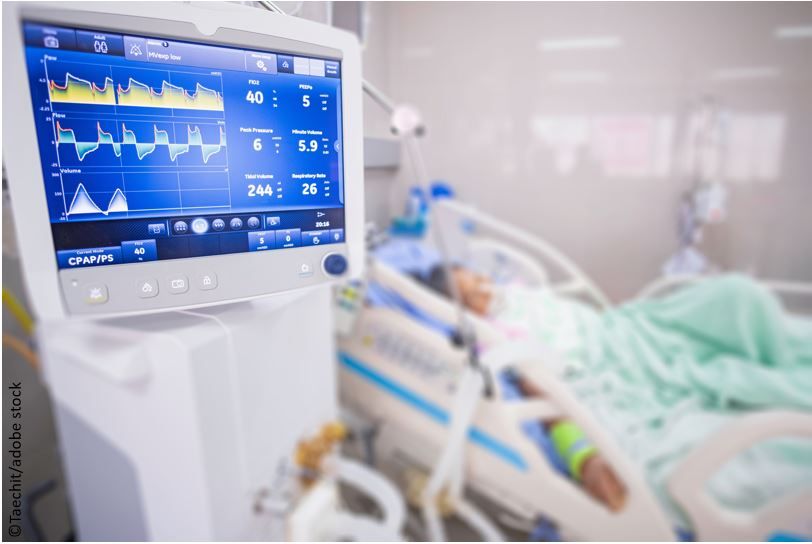- Clinical Technology
- Adult Immunization
- Hepatology
- Pediatric Immunization
- Screening
- Psychiatry
- Allergy
- Women's Health
- Cardiology
- Pediatrics
- Dermatology
- Endocrinology
- Pain Management
- Gastroenterology
- Infectious Disease
- Obesity Medicine
- Rheumatology
- Nephrology
- Neurology
- Pulmonology
In Patients with Respiratory Failure, Comorbid RSV Did Not Increase 28-day Mortality: Study
©Taechit/Adobe stock

Patients with respiratory failure and cormobid respiratory syncytial virus (RSV) have a higher risk of disease complications, according to a study published recently in the journal Frontiers in Medicine. However, the 28-day mortality for patients with respiratory failure was the same regardless of RSV infection.
RSV affects children and adults and is associated with increased morbidity and mortality. Presentation is multifaceted, with some children and adults experiencing symptoms of upper respiratory tract infection while premature infants and older adults may experience symptoms of a severe lower respiratory tract infection.
This study aimed to investigate the clinical outcomes, treatments, and respiratory complications for patients who have both an RSV infection and respiratory failure.
This study was conducted in a tertiary care, university-affiliated teaching hospital in Thailand. Patients who were admitted to the medical ward and needed mechanical ventilation support for more than 24 hours due to respiratory failure between January 2014 and July 2019 were considered for the study. Patients aged ≥18 years who had respiratory samples analyzed were enrolled with RSV infection confirmation based on positive findings of respiratory pathogen testing.
Electronic health records were used to collect data on participant characteristics, clinical features, disease severity, hospital courses, and outcomes. Respiratory failure was determined as the respiratory system’s inability to meet requirements for oxygenation, ventilation, and metabolic demand. The primary outcome was 28-day mortality, with ventilator-dependent days, hospital length of stay (LOS), tracheostomy after respiratory failure, and hospital death being secondary outcomes.
There were 335 patients included in the final analysis, of which 67 were in the RSV group and 268 in the non-RSV group. No significant differences were found in the baseline characteristics of the 2 groups (mean age 72.7 and 71.0 years; men, 46.3% and 47.4%, respectively). The RSV group had a higher rate of community-acquired pneumonia and health care–associated pneumonia was more common in the non-RSV group.
FINDINGS
Within the RSV group, there was a 38.8% 28-day mortality rate compared with 37.1% in the non-RSV group, and no significant differences were found in mortality rates, ventilator-dependent days, or LOS. Patients in the RSV group were more often given bronchodilator drugs (98.5% vs 60.8%) and ribavirin (80.6% vs 0.7%). Ventilator-associated pneumonia (52.2% vs 33.8%) and lung atelectasis (10.4% vs 3%) were more common in the patients in the RSV group compared with the non-RSV group.
Higher use of ribavirin and tracheostomy were seen in nonsurvivors vs survivors (95.8% vs 72.1%; 20.8% vs 4.7%). In-hospital death was associated with acute respiratory distress syndrome (relative risk [RR], 4.25; 95% CI, 1.58-11.42), ventilator-associated pneumonia (RR, 10.21; 95% CI, 4.83-21.59), and prolonged ventilator support (RR, 2.31; 95% CI, 1.03-5.21). RSV was not associated with increased hospital death.
Among potential study limitations the investigators note the observational design which cannot control for potential confounders, and mortality rate in the non-RSV group may not be able to reflect the rate of patients with respiratory failure patients in general practice. Organ failures also should be considered for mortality rate.
The researchers concluded that 28-day mortality was similar in patients infected and not infected with RSV. Complications, however, were more frequent in patients with an RSV infection.
Reference: Tongyoo S, Naorungroj T, Laikitmongkhon J. Predictive factors and outcomes of respiratory syncytial virus infection among patients with respiratory failure. Front Med (Lausanne). Published online March 27, 2023. doi:10.3389/fmed.2023.1148531
